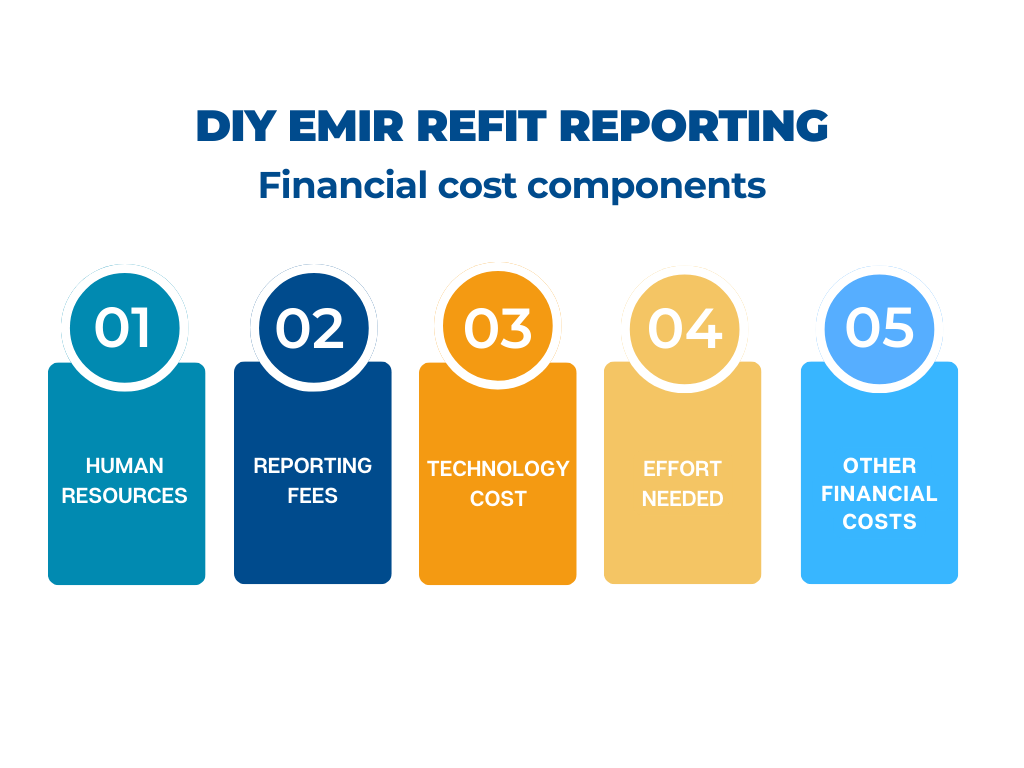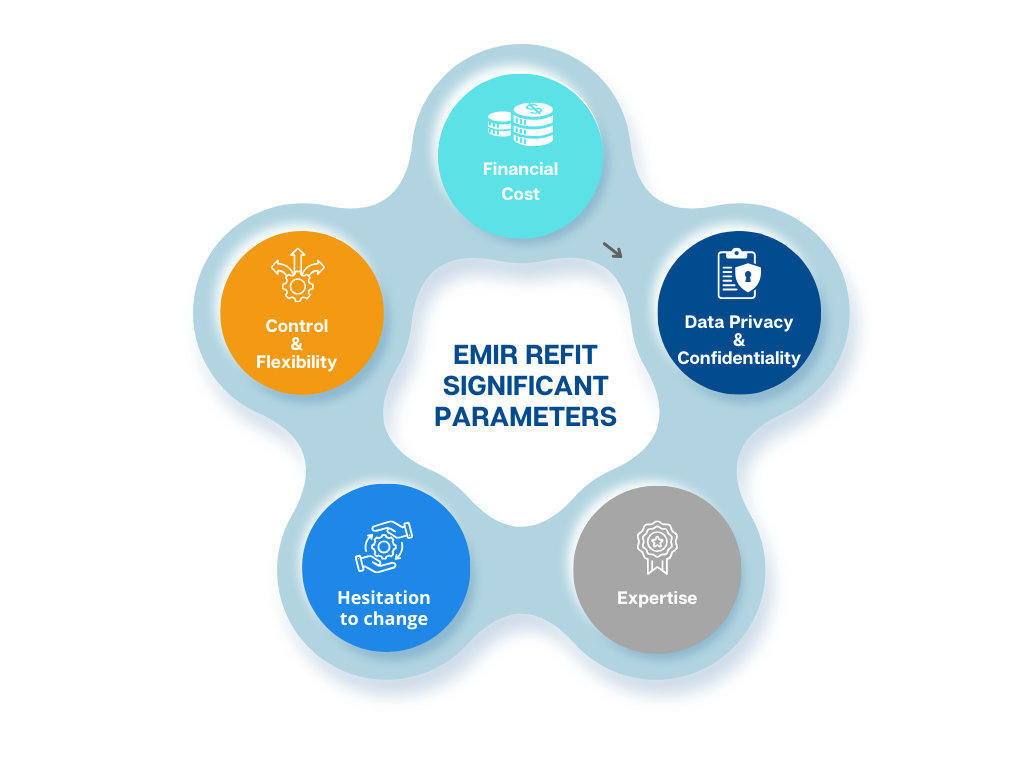The world of financial regulations is constantly evolving, and it is crucial for businesses to stay compliant with these rapidly changing rules. One such regulation is the European Market Infrastructure Regulation (EMIR) and its many reporting requirements.
Understanding EMIR REFIT Reporting
The upcoming changes to EMIR reporting were drafted to harmonise the reporting regimes with the work being carried out at an international level by IOSCO-CPMI on critical derivatives’ elements.
There are several changes that the new regime ushers in, including more granular data submitted, new fields, changes to fields that are carried over from the current EMIR reporting regime, new outgoing messages from TRs to reporting entities as well as regulators such as abnormal values, outdated valuations and so on, and the introduction of the UPI, among others. Crucially, the new regime increases the number of data points and values that are subject to reconciliations, which have now expanded to include, for example, valuations.
While all the lessons learned with the original iteration of EMIR will not be altogether scrapped, the new reporting regime introduces its own complexities. Hence, reporting counterparties need to be prepared to hit the ground running from the reporting start date as there is no grace period involved. This creates an acute need for reporting entities to enhance their Information Technology, Risk and Compliance capabilities in order to fully digest the substantial body of standards, guidance, and rules issued by the regulators for EMIR REFIT.
Can EMIR REFIT Reporting Be Done In-house?
Many reporting entities consider implementing EMIR REFIT reporting in-house for reasons such as greater control over sensitive financial data, flexibility, immediate cost savings, and resource reusability. However, it’s crucial for any organization considering an in-house solution to evaluate the real costs and missed opportunities associated with this choice.
Financial Cost Parameters of DIY EMIR REFIT Reporting
The financial cost associated with self-implementing EMIR REFIT reporting encompasses a spectrum of elements, including human resources expenses, reporting fees, technology-related costs, and the effort required, among others.

- Human Resources cost: The diverse roles required for in-house EMIR REFIT reporting lead to substantial personnel- related costs, including salaries, training, recruitment, and administrative expenses. The types of professionals required to run this kind of solution internally may include:
- Regulatory Analysts
- IT Business Analysts
- Software Developers
- Infrastructure Architects
- Quality Assurance Experts
- UI/UX Experts
- Project Managers
Talent acquisition and retention challenges have become more prominent than ever, making assembling an in-house team a complex and costly endeavor. Partnering with specialised service providers can alleviate these issues and ensure efficient and compliant reporting.
- Reporting fees: Choosing to contract directly with a Trade Repository (TR) for EMIR REFIT reporting rather than using a third-party aggregator can result in higher reporting costs. This cost disparity is primarily attributed to the fee bands associated with trade reporting. When a third-party aggregator is involved, it can accumulate a larger volume of trade data, reaching higher fee bands more quickly. This increased volume allows the aggregator to benefit from economies of scale, resulting in a more favorable price per trade, with the potential to pass on this financial benefit to the reporting entities. Consequently, companies contracting directly with TRs may find themselves paying comparatively higher fees due to the aggregation advantage held by aggregators and service providers in the reporting process, including when it relates to EMIR REFIT.
- Technology cost: Choosing to tackle EMIR REFIT reporting entails bearing the full brunt of technology costs, which may encompass expenses related to software licenses, hardware and infrastructure, as well as security measures. In contrast, opting for a specialized service provider often provides a more cost-effective option. They can leverage their existing infrastructure, software resources, and security protocols, ultimately reducing the company’s financial burden. One example when it comes to EMIR REFIT is the expertise and effort needed to migrate from the current CSV files that are currently used to the newly introduced XML template following the ISO 20022 methodology. Once again, the economies of scale achieved through service providers can significantly lower technology expenditures when compared to attempting to manage these complexities independently.
- Effort required: Undertaking EMIR REFIT reporting internally necessitates a significant investment of time across multiple phases. During the Preparation phase, a considerable number of hours is needed to conduct a thorough gap analysis to identify the required changes. Subsequently, moving into the Design and Implementation phase, there’s a substantial time commitment linked to tasks such as integrating new fields, adhering to recently introduced ISO standards, mapping Unique Product Identifiers (UPIs), converting files from CSV to XML formats, integrating additional action types within trading systems, and handling various related activities. Following this, the Quality Assurance phase demands a considerable amount of time to ensure that the changes meet the criteria of completeness, accuracy, and adherence to specified timelines. As the reporting deadline approaches, meticulous planning and execution become imperative during the Migration and Go-Live phases to prevent last minute issues and ensure a seamless transition to the new reporting requirements, such as, for example, the updating of outstanding trades. Last but not least, a commonly underestimated phase is the one of Post-implementation, which necessitates plenty of time to establish and maintain the required monitoring mechanisms and procedures. Overall, the entire in-house EMIR REFIT reporting process is a time-intensive endeavor that typically spans from eight to twelve months for completion.
- Other financial costs: Costs related to the continuous monitoring of the regulatory landscape and other opportunity costs are incurred when opting for in-house reporting. Maintenance costs escalate due to the need for continuous monitoring of the complex and ever-changing regulatory landscape, requiring substantial hours for compliance updates. For example, in EMIR REFIT, the reconciliation process will be conducted in two phases: 87 fields in the go-live phase, and 61 fields two (2) years after. Furthermore, there’s an opportunity cost involved as valuable hours and resources are redirected from revenue-generating endeavors. As per Deloitte’s recent global outsourcing survey, “Enabling focus on core functions” is the most common perceived benefit among companies that use outsourcing.
Other Significant factors influencing DIY of EMIR REFIT Reporting
Apart from the financial costs, there are additional factors influencing self-implementation of EMIR REFIT reporting, including the control and flexibility of the whole process, data privacy and confidentiality issues, hesitation to change and the need for the necessary expertise.

- Control and flexibility: While organizations often believe that keeping EMIR REFIT reporting in-house will provide them with superior control and customization, opting for a comprehensive regulatory reporting solution can offer a host of compelling benefits that match or surpass in-house efforts. Such solutions offer transparency throughout the reporting cycle, using audit logs, a detailed view of the reporting cycle progress, enhanced error handling processes, and easy access to the actual files reported and received to and from the TR. Additionally, such solutions facilitate customizations, offering agility and flexibility to tailor the reporting process to the specific needs of each organization. Most importantly, via these solutions, organizations can tap into best practices and industry knowledge that might be challenging to obtain in-house.
- Data privacy and confidentiality: Understandably, another reason why an organization wants to keep EMIR REFIT in-house is data privacy and confidentiality concerns. However, when opting for a reliable regulatory reporting outsourcing solution, including EMIR REFIT, companies benefit from stringent security measures, usually ones that include GDPR compliance and ISO 27001 certification. Moreover, such solutions typically rely on hosting infrastructure from renowned cloud providers such as AWS and Microsoft, affording clients the robust security advantages inherent to these industry-leading platforms. This safeguards sensitive financial data and ensures that regulatory reporting is conducted in a secure and compliant manner.
- Hesitation to change: One compelling reason behind the decision to conduct EMIR REFIT reporting in-house often stems from a reluctance to embrace change, guided by the old adage, “If it works, don’t break it.” However, the crucial question here lies in defining what the phrase “it works” truly entails. Just like a car that may successfully transport you to work every day but is neither energy-efficient nor cost-effective, the status quo may appear functional. However, it’s essential to weigh the hidden costs and the missed opportunities that adopting an alternative, third-party approach or solution might present.
- Expertise: The inclination to manage EMIR REFIT reporting internally may rest on the belief that the organization possesses the requisite expertise. Nevertheless, engaging a service provider can offer access to seasoned experts who are well-versed in both the regulatory requirements and underlying technology, and help an organization potentially mitigate the risk of errors that may result in significant financial penalties and enhance overall compliance with the upcoming EMIR REFIT requirements.
Conclusion
The shift towards outsourcing is evident in the financial industry with 70% of B2B decision makers entrusting key services to third-party providers. As presented above, in-house reporting can incur high financial and time costs, as well as expertise costs. Therefore, outsourcing to an experienced service provider offers any organization a compelling solution, helping them navigate the many regulatory challenges effectively, while reducing costs and ensuring ongoing compliance with evolving requirements.
MAP FinTech can fully assist any firm under EMIR Reporting to seamlessly adapt to the evolving reporting requirements brought on by EMIR REFIT. Contact our team of experts and learn how you can benefit from our innovative and comprehensive regulatory reporting solutions.
